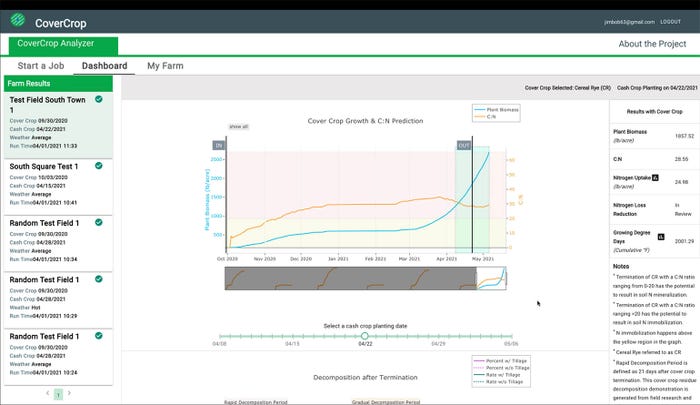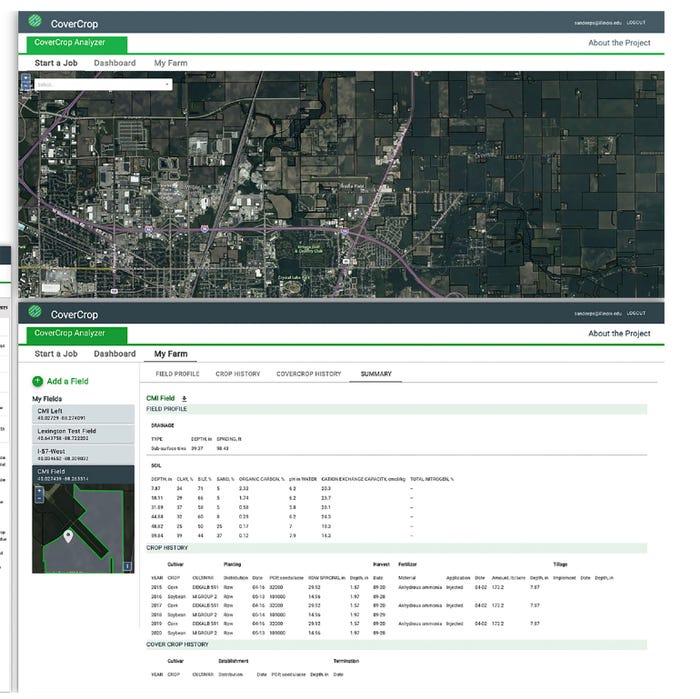
A Cover Crop Decision Support Tool was demonstrated during an April 1 webinar. The tool is designed to help Illinois growers manage cover crops in their fields. The version demonstrated last week is the first version of the tool and developers welcome ideas for improvement.
"We obviously have a whole lot of ideas and we welcome more feedback and ideas on how we can improve this (and) how we can make this more usable for the farmers," said Jonathan Coppess, an assistant professor and director of the Gardner Agriculture Policy Program at the University of Illinois College of Agricultural, Consumer and Environmental Sciences.
A team from and the University of Illinois College of Agricultural, Consumer and Environmental Sciences and Purdue's Agronomy Department collaborated on developing the tool with funding from the Illinois Nutrient Research and Education Council. The tool was first released in October 2020.
Why cover crops?
Dr. Shalamar Armstrong, an associate professor in Purdue's Agronomy Department, has spent several years working with farmers. Most farmers, he said, are responsible and want to use farming practices that foster the principle of sustainable intensified agriculture, meaning they want to maximize production and profit while maximizing nutrient use efficiency and minimizing the negative impact on the environment.
"The easiest way to do this is through cover crop inclusion in conventional systems," Armstrong said.
The original idea behind planting cover crops was to have a cover on the soil surface to reduce the impact of rain and lessen soil erosion, but within the last 15 years, scientists have discovered that nitrogen scavenging is a huge benefit and ecosystem service of cover crops. Cover crops can reduce nitrate loss by 30% to 40% in a tile drained soil landscape. They can also enhance soil health by increasing organic matter and holding nutrients in the soil. Cover crops have been used to reduce weed pressure, increase water infiltration and reduce soil compaction.
"But despite these benefits, less than 5% of row crop agriculture in the Upper Mississippi River Basin has received cover crops or use cover crops so there's some questions . . . we see that some questions are remaining," Armstrong said.
Enter cover crop tool
The Cover Crop Decision Support Tool was developed to help answer some of those questions. Questions include:
How much biomass did the cover crops generate?
How much nitrogen was conserved in the biomass?
How much cover crop nitrogen will be available to my cash crop and when?
How much cover crop biomass carbon was generated?

The goal is for the tool to present a way for growers to model and visualize the data from their smartphones or laptop computers.
To enter the Cover Crop Analyzer, type covercrop.ncsa.illinois.edu into your browser. First-time users need to register with their email address and a password and go through a verification process. Next, go to my farm and add a field. The data is pre-filled based on common land use practices and data from USDA and may be changed as a grower becomes more comfortable with the tool. Now, the only cover crop is cereal rye, and developers didn't give a timeline for when more would be added.

Researchers are hoping to learn more from growers about if they plant cover crops and what factors influenced their decisions to plant cover crops during small-group meetings planned for April 5-9. Email [email protected] to learn more about the meetings or to sign up.
About the Author(s)
You May Also Like




